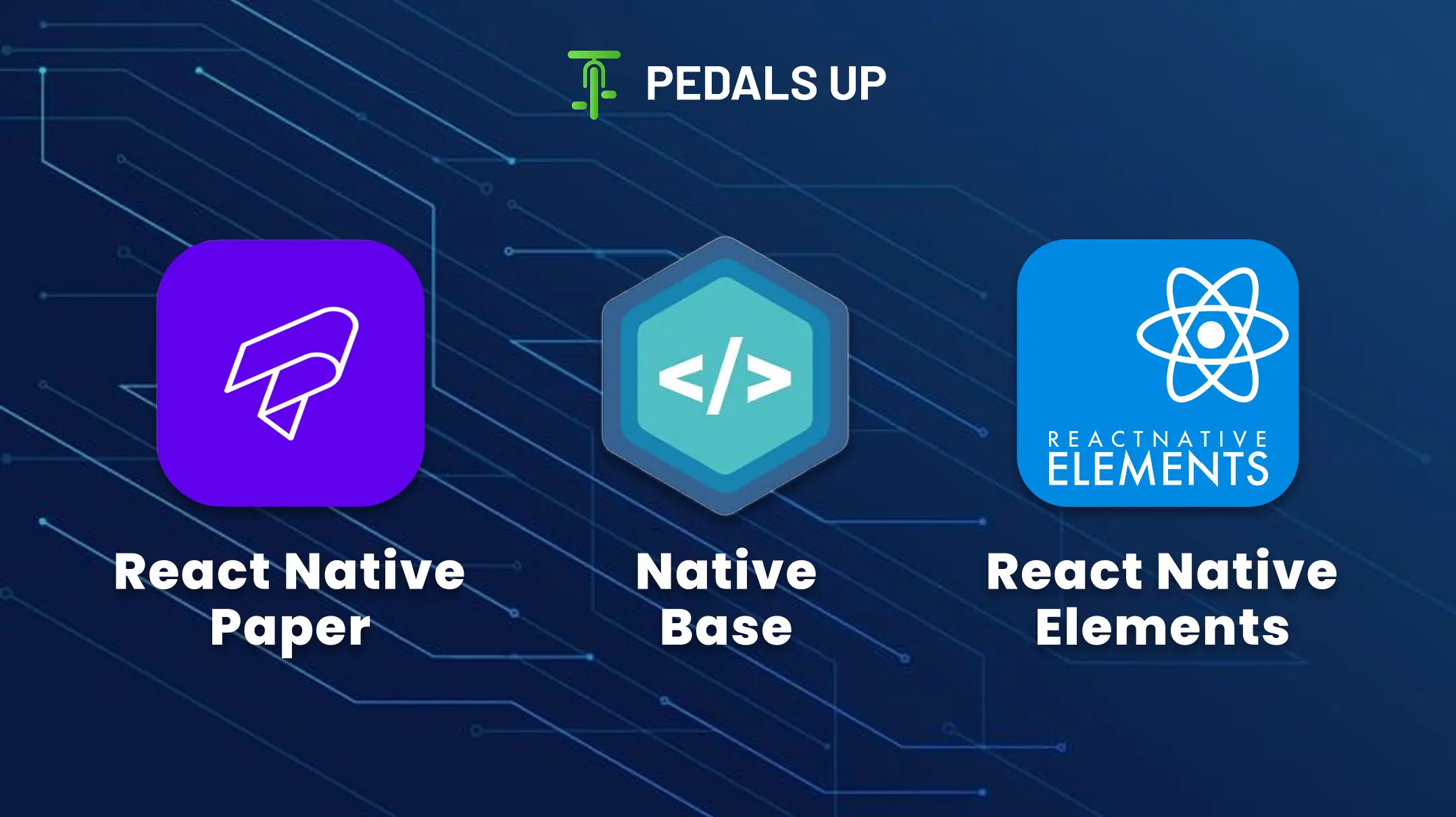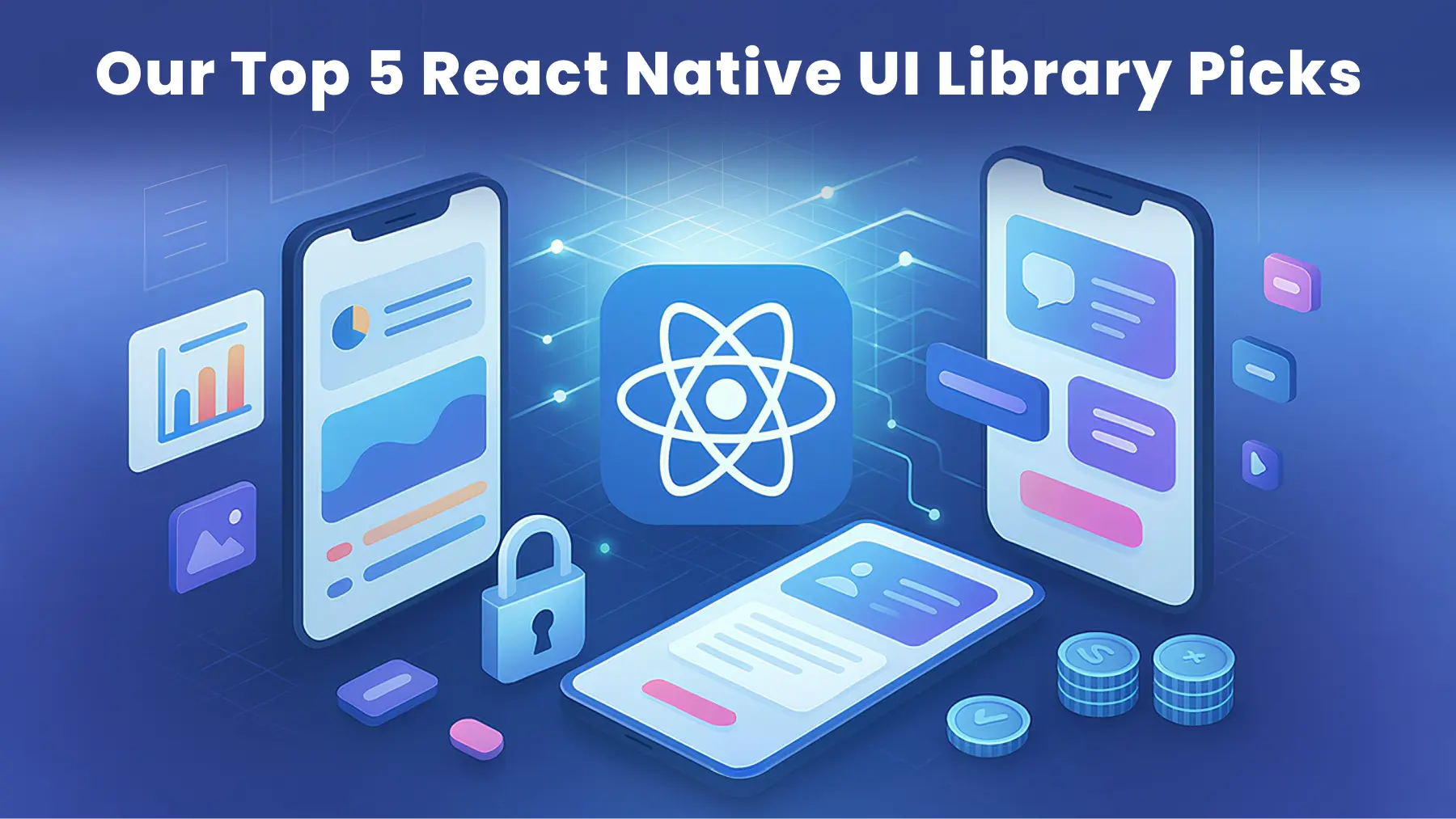Introduction
Mobile users often uninstall applications that don’t feel natural or refined. In fact, Statista reports that 25% of mobile apps are used only once after being downloaded. This highlights that design isn’t just visual—it directly influences retention. That’s where React Native UI libraries come in, accelerating development without compromising on performance or design quality.
At Pedals Up, we’ve leveraged React Native to create blazing-fast, user-focused apps for fintech, e-commerce, and consumer platforms. This blog post deconstructs the top UI libraries we depend on, driven by real-world use, active updates, and community endorsement.
Why Use UI Libraries in React Native Development?
React Native offers the agility of cross-platform development, but hand-crafting every component can be time-consuming. UI libraries help by:
- Accelerating development: Pre-built components significantly reduce coding time.
- Maintaining consistent design: Ensures a uniform look and feel across your application.
- Adhering to mobile UI/UX best practices: Libraries often incorporate proven design patterns.
- Minimizing bugs with pre-tested elements: Components are typically well-tested, leading to fewer issues.
These libraries are tested on various devices, flexible, and ready for production.
Our Top 5 React Native UI Library Picks

1. React Native Paper
Modern UI Based on Material Design Principles
Why it excels:
Built atop Google’s Material Design guidelines, offering a modern and familiar aesthetic.
Extremely customizable and accessible, allowing for tailored designs.
Seamlessly integrates with theming and dark mode.
Use Cases: Fintech dashboards, onboarding flows, mobile admin apps.
Real-World Example: At Pedals Up, we built the front-end of a Singaporean client’s personal finance app using React Native Paper. Our goal was to ship in less than 3 months with a clean, stable interface. Paper’s unified styling and form components saved us 20% in delivery time.
GitHub Stars: 11.4k+
2. NativeBase
Component Library Built for Cross-Platform Consistency
Why it stands out:
Ready-to-use UI components with a native look and feel across platforms.
Supports custom themes for brand-specific designs.
Easily integrates with other React Native components.
Use Cases: E-commerce, SaaS dashboards, social apps.
Real-World Example: NativeBase played a critical role in developing an MVP for a subscription e-commerce application. We created the UI in under 6 weeks, leveraging its grid system and form components to minimize design-to-code handoff friction.
GitHub Stars: 19.2k+
3. React Native Elements
All-in-One UI Toolkit
Why it stands out:
Comprehensive collection of pre-built components (buttons, icons, cards, lists, etc.).
Easy integration with Expo and Web projects.
Strong community support and open-source plugins.
Use Cases: Prototyping, multi-featured consumer apps, chat interfaces.
Real-World Example: A US-based social networking client needed rapid prototyping. We shipped a working alpha with chat functionality, avatars, and feed UI within 30 days using Elements.
GitHub Stars: 24.5k+

4. React Native UI Kitten
Powerful Theming System
Why it stands out:
Powered by the Eva Design System, offering a robust design foundation.
Dynamic theming with runtime switching for flexible designs.
Developer tools for design-theming alignment.
Use Cases: Branded apps, corporate-grade products, analytics dashboards.
Real-World Example: I utilized UI Kitten for one of our data analytics apps that required dynamic theme switching from light/dark/corporate custom colors. UI Kitten’s Eva Design System handled this seamlessly.
GitHub Stars: 9.2k+
5. Shoutem UI
Developer-Friendly Components with Built-In Animations
Why it stands out:
Pre-built styled components for quick development.
Smooth animations are built-in, enhancing user experience.
Perfect for MVPs and content-heavy applications.
Use Cases: Media apps, travel guides, MVPs with fast turnaround.
Real-World Example: We built a content-rich mobile MVP for a travel blogging website. Shoutem’s list and card UI saved a minimum of 40 development hours and enabled animated transitions without writing additional code.
GitHub Stars: 5.1k+
Docs: https://shoutem.github.io/docs/ui-toolkit/introduction
How to Choose the Right Library
Selecting the best UI library depends on your project’s specific needs. Here’s a quick guide:
- Custom Theming: Dive into the colorful universe of React Native UI Kitten to precisely match your brand’s distinctiveness.
- Material Design Support: Give your app a sleeker look with React Native Paper, offering solid components that follow Google’s Material Design guidelines.
- Rapid Prototyping: Speed up your development cycle with React Native Elements, making it easier to build breathtaking prototypes quickly.
- MVP Building: For those constructing a Minimum Viable Product, Shoutem UI is an all-inclusive toolkit crafted to simplify the development process.
- Native Performance: Enjoy the unmatched performance of NativeBase, where elements are crafted for seamless integration and responsiveness.
When choosing a library, always consider the scale of your project, brand-specific requirements, and estimated delivery timelines.
Conclusion
According to a 2023 Statista survey, over 42% of mobile app developers favor using UI libraries to improve time-to-market. React Native, as a leading cross-platform framework, also benefits from regular updates and an expanding ecosystem (Statista Report).
UI can make or break your mobile app. The correct choice of a React Native UI library saves time and helps build experiences that users adore. Whether you’re developing a SaaS dashboard, a consumer app, or a fintech product, libraries like React Native Paper and NativeBase can help you succeed.
At Pedals Up, we don’t just choose the most aesthetically pleasing components; we select what is best for your project’s objectives, scalability, and performance.
Let’s discuss your vision! Whether you need an MVP in 30 days or a branded enterprise app, we can assist you in making the best technology decisions.
Book a Consultation to stay ahead in mobile innovation.




